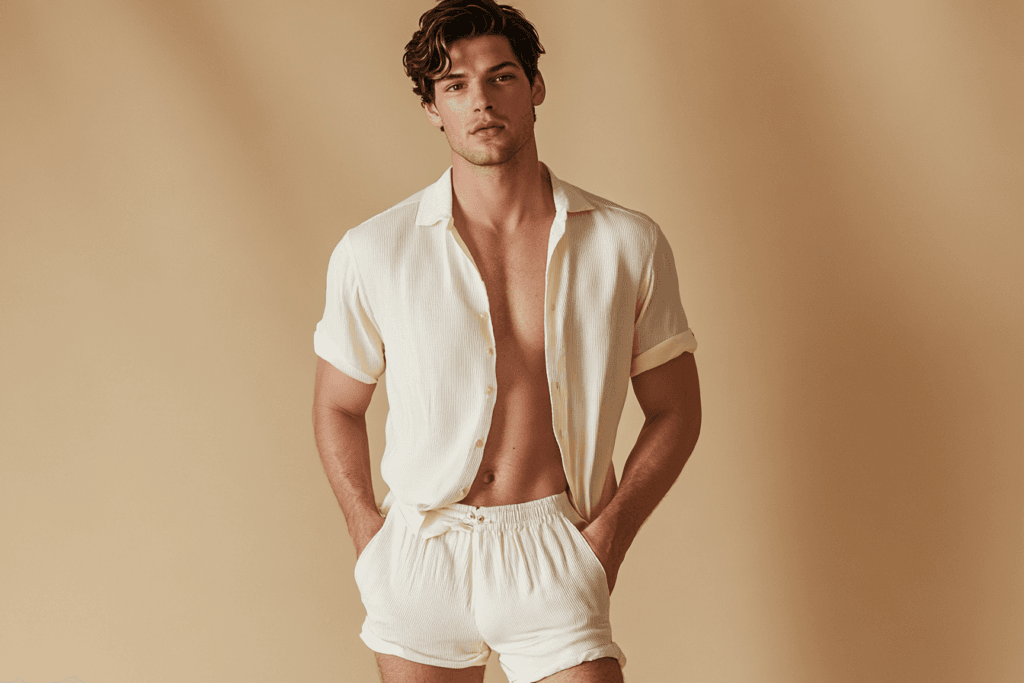
Breathable fabric enhances your comfort by allowing air to circulate and regulating body temperature. This type of material excels at wicking away moisture, keeping your skin dry.
- High-emissivity fabrics reduce skin temperature by up to 4 °C, improving thermal comfort.
- During exercise, low-emissivity materials increase skin temperature by 15 °C, showing their importance in heat retention.
- Over 50 % of your body’s heat escapes through radiation, making breathable fabric essential for managing temperature.
Key Takeaways
- Breathable fabric helps you stay comfy by letting air flow. It controls body heat, so it works well in hot or cold weather.
- These fabrics pull sweat away from your skin to keep it dry. This helps stop irritation and bad smells during exercise.
- Picking the right breathable fabric for your activity and weather makes you feel better. Think about the fit, style, and material when choosing.
What’s the Benefits of Breathable Fabric
Comfort and Temperature Regulation
Breathable fabric enhances your comfort by maintaining a balance between airflow and body temperature. It allows heat to escape while letting cool air circulate, preventing overheating. For example, linen’s loose weave promotes excellent airflow, keeping you cool even in warm weather. Merino wool, on the other hand, excels in temperature regulation, making it suitable for both hot and cold climates.
Studies show that garments made from breathable fabric score higher in comfort ratings. A prototype garment achieved a mean comfort rating of 8.5 compared to 7.78 for a control garment. This demonstrates how breathable materials provide superior comfort. By reducing the “sticky” or “clammy” feeling, these fabrics ensure you stay comfortable throughout the day.
Moisture-Wicking and Odor Control
Breathable fabric wicks moisture away from your skin, keeping you dry and comfortable. This feature is especially useful during physical activities or in humid conditions. Rayon, for instance, absorbs moisture effectively, ensuring dryness in warm environments. Similarly, merino wool combines moisture-wicking with odor control, making it ideal for extended wear.
Moisture-wicking fabrics prevent sweat buildup, reducing the risk of skin irritation and chafing. They also help control odor by keeping your skin dry and minimizing bacterial growth. This combination of benefits ensures you feel fresh and confident, even during intense activities.
Ideal for Activewear and Outdoor Use
Breathable fabric is a game-changer for activewear and outdoor clothing. It regulates body temperature, wicks away sweat, and enhances overall performance. During physical activities, it allows heat to escape, keeping you cool and focused. This minimizes distractions and helps you perform at your best.
The demand for breathable fabrics in activewear continues to grow. The global market for breathable waterproof fabrics was valued at $1.8 billion in 2023 and is projected to reach $3.5 billion by 2032. This growth reflects the increasing need for high-performance clothing that adapts to various weather conditions. Whether you’re hiking, running, or simply enjoying the outdoors, breathable fabric ensures comfort and functionality.
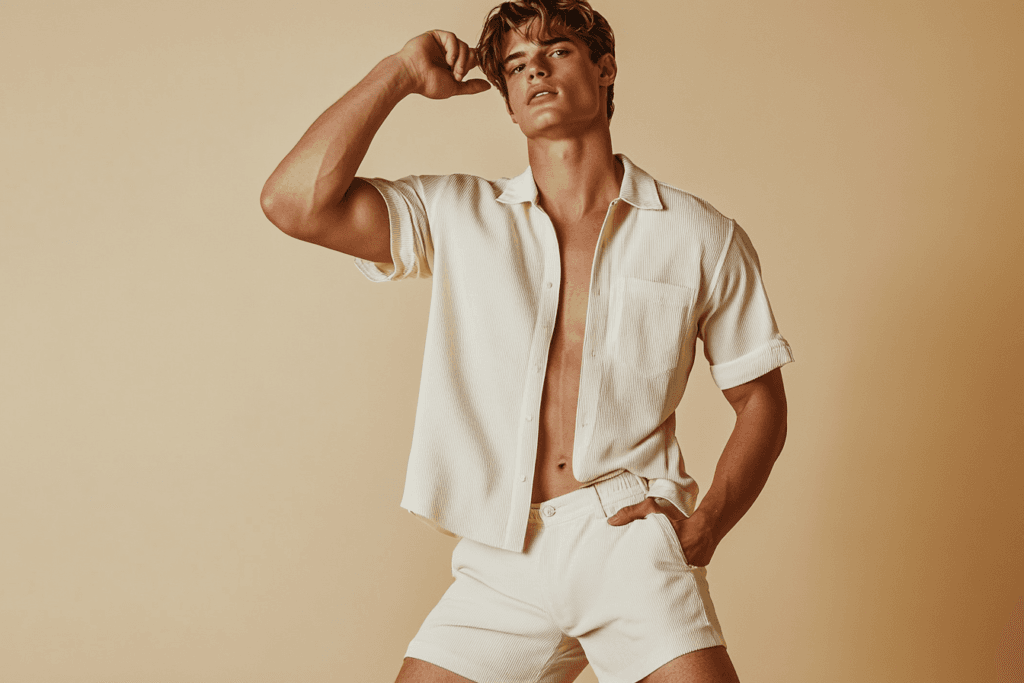
How Breathable Fabric Works
Fiber Composition and Airflow
The fibers in breathable fabric play a crucial role in allowing air to circulate. Natural fibers like cotton and linen have porous structures that promote airflow, keeping you cool and comfortable. Synthetic fibers such as polyester and nylon are engineered to enhance breathability by creating microchannels for air movement. These fibers work together to regulate temperature and prevent overheating.
Fiber composition also impacts how well the fabric handles moisture. For example, bamboo fibers are naturally absorbent, pulling moisture away from your skin. This combination of airflow and moisture management ensures that breathable fabric keeps you dry and comfortable, even during intense activities.
Weave and Construction Techniques
The way fabric is woven significantly affects its breathability and performance. Certain weave structures, like leno weaves, improve airflow and mechanical properties. These weaves create gaps in the fabric, allowing air to pass through while maintaining durability.
- Leno woven structures enhance junction rupture force, making the fabric stronger and more breathable.
- Graphene-modified weaves improve mechanical performance, ensuring the fabric withstands wear and tear.
- Shear-thickening fluid-enhanced fabrics offer superior gripping efficiency, which contributes to breathability and functionality.
Knitted fabrics also excel in breathability due to their loose construction. They allow air to circulate freely, making them ideal for activewear and outdoor clothing. By understanding these techniques, you can appreciate how fabric construction influences comfort and performance.
Moisture-Wicking Mechanisms
Breathable fabric excels at managing moisture through advanced wicking mechanisms. After absorbing sweat, the fabric transports it away from your skin to the outer surface, where it evaporates. This process keeps you dry and prevents discomfort.
Knitted fabrics are particularly effective at moisture diffusion. Their loose structure allows sweat to move quickly, enhancing evaporation. In contrast, woven fabrics have tighter weaves that restrict moisture transport, making them less efficient in wicking.
The combination of moisture-wicking and airflow ensures that breathable fabric maintains dryness and comfort. Whether you’re exercising or spending time outdoors, this feature helps you stay fresh and confident throughout the day.
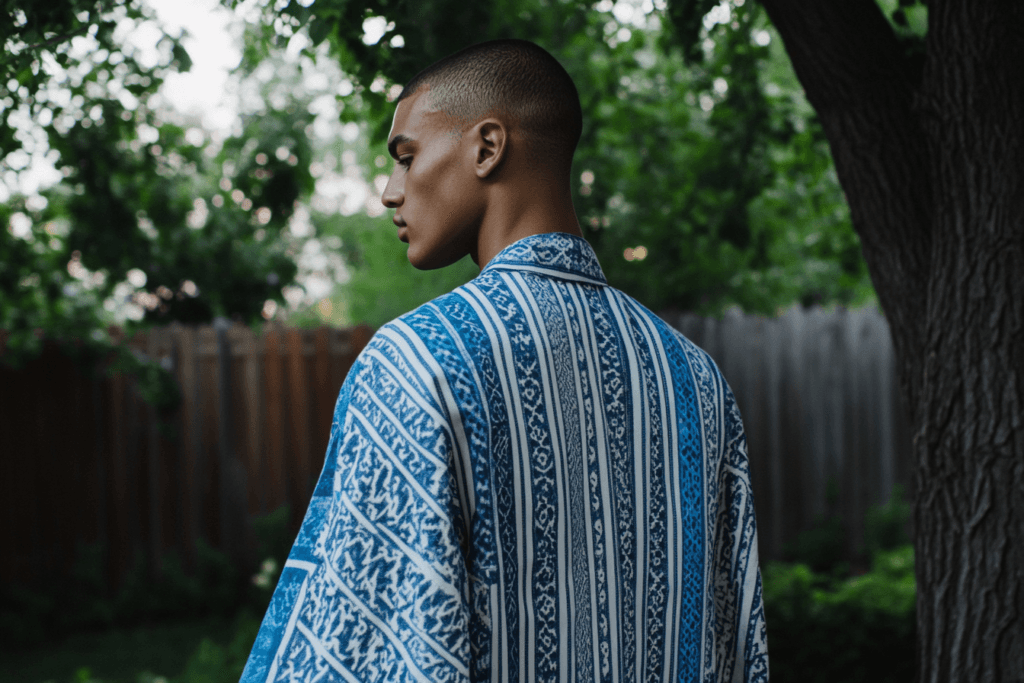
How Many Types of Breathable Fabrics
Natural Fabrics (Cotton, Linen, Bamboo)
Natural fabrics like cotton, linen, and bamboo are excellent choices for breathable fabric. Cotton is soft, lightweight, and allows air to circulate freely, making it ideal for everyday wear. Linen, with its loose weave, promotes airflow and dries quickly, keeping you cool in hot weather. Bamboo fabric, derived from bamboo pulp, offers natural moisture-wicking properties and is highly absorbent.
These fabrics are eco-friendly and biodegradable, making them a sustainable option. They are perfect for casual clothing, bedding, and summer apparel. Their breathability ensures comfort, especially in warm climates or during light physical activities.
Synthetic Fabrics (Polyester, Nylon, Spandex)
Synthetic fabrics like polyester, nylon, and spandex are engineered to enhance breathability and performance. Polyester is durable and moisture-wicking, making it a popular choice for activewear. Nylon, known for its strength and elasticity, varies in air permeability depending on its weave. For instance, ripstop nylon has lower breathability, while mesh nylon allows more airflow. Spandex, often blended with other fabrics, provides stretch and recovery but has lower air permeability due to its dense structure.
| Fabric Type | Key Characteristics | Air Permeability Insights |
|---|---|---|
| Polyester | Durable, moisture-wicking | Moderate air permeability, influenced by weave |
| Nylon | Strong, elastic | Varies; ripstop has lower, mesh has higher |
| Spandex | Stretchy, recovery | Lower permeability with higher spandex content |
These fabrics are ideal for sportswear, outdoor gear, and swimwear. They combine functionality with durability, ensuring comfort during intense activities.
Advanced and Hybrid Fabrics
Advanced and hybrid fabrics combine natural and synthetic materials or use innovative technologies to enhance breathability. Smart breathable fabrics, for example, adapt to temperature changes by adjusting airflow. Microporous membranes and coatings, made from materials like polyurethane or ePTFE, allow moisture vapor to escape while blocking water.
| Differentiation Factors | Details |
|---|---|
| Types of Fabrics | Closely Woven, Microporous Membranes, Smart Fabrics |
| Raw Materials | Polyurethane, EPTFE, Polyester, Cotton |
| Applications | Outdoor Apparel, Healthcare, Sportswear |
These fabrics are commonly used in high-performance clothing, such as waterproof jackets and medical textiles. They offer a balance of breathability, durability, and weather resistance, making them suitable for extreme conditions.
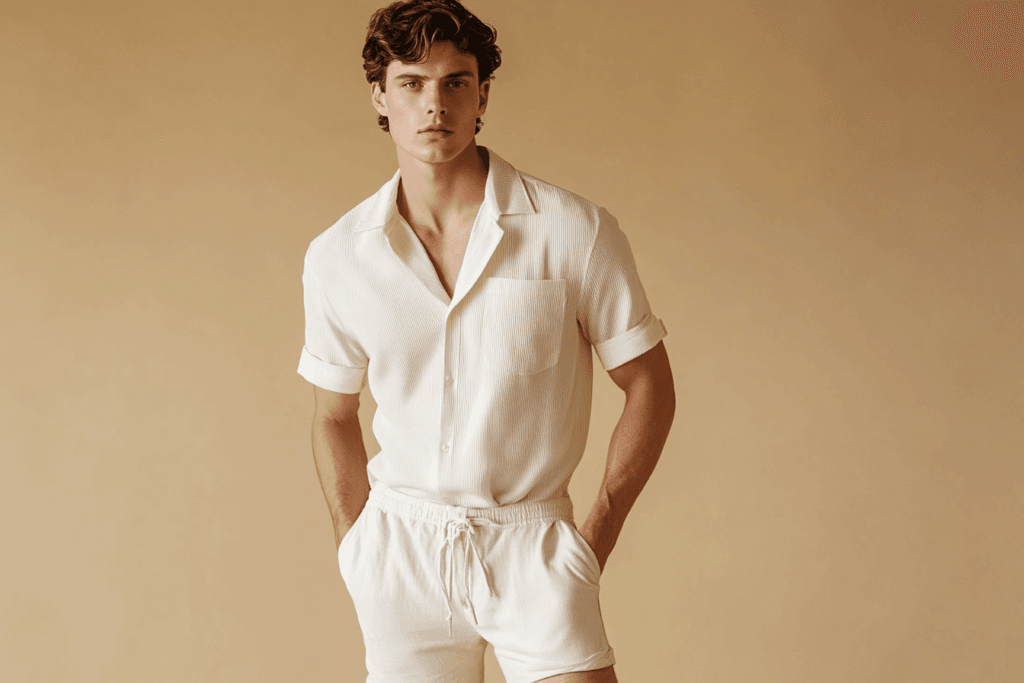
How to Choose the Right Breathable Fabric
Matching Fabric to Activity or Climate
Selecting the right breathable fabric depends on your activity and the climate. For warm weather or light activities, natural fabrics like cotton or linen work well. They allow air to circulate and keep you cool. For intense physical activities, synthetic options like polyester or nylon provide better moisture-wicking and durability. If you’re in a cold climate, fabrics like merino wool regulate temperature while keeping you dry.
Consider the environment you’ll be in. For example, hiking in humid conditions calls for lightweight, quick-drying materials. On the other hand, skiing or snowboarding requires breathable yet insulating fabrics to maintain warmth without overheating. Matching the fabric to your needs ensures maximum comfort and performance.
Understanding Fabric Labels and Composition
Fabric labels provide essential details about the material and its properties. Understanding these labels helps you make informed choices. Look for information about fiber content, care instructions, and performance features like moisture-wicking or UV protection.
| Factor | Description |
|---|---|
| Information | Checks if the label provides complete details about the fabric. |
| Attractiveness | Rates the label’s design and originality, from 1 (not attractive) to 5 (very attractive). |
| Form | Examines the label’s shape, such as circular or rectangular. |
| Price | Compares the garment’s price across different stores. |
| Material | Focuses on the label’s material and its durability. |
| Color | Notes the color used, often linked to brand identity. |
| Clarity | Ensures the label complies with established guidelines. |
| Language | Evaluates if the language used is clear and easy to understand. |
Pay attention to these factors when choosing garments. A clear and detailed label can guide you toward the best breathable fabric for your needs.
Importance of Fit and Garment Design
The fit and design of a garment significantly impact its comfort and functionality. Breathable fabrics perform best when the garment fits well and allows for natural movement. Poorly designed clothing can restrict airflow and reduce the fabric’s effectiveness.
- Ergonomic designs improve comfort and wearability, especially for workwear like medical scrubs.
- Features like pocket placement and fit testing enhance usability during long hours.
- High-quality breathable fabrics regulate temperature and wick moisture, keeping you dry.
When shopping, prioritize garments with thoughtful design elements. A well-fitted piece made from breathable fabric ensures you stay comfortable and confident throughout the day.
Breathable fabric enhances comfort by regulating temperature and wicking moisture. Understanding its properties helps you select garments suited to your needs. For example, hi-tech fabrics wick sweat away, while thermal-regulating materials adapt to climate changes. The market for breathable fabrics is growing, with a projected value of USD 16 billion by 2027.
| Statistic | Value |
|---|---|
| Projected Market Value | USD 16 billion by 2027 |
| Annual Growth Rate | 6.5% |
| Customer Satisfaction Increase | 25% for customized breathable mesh tops |
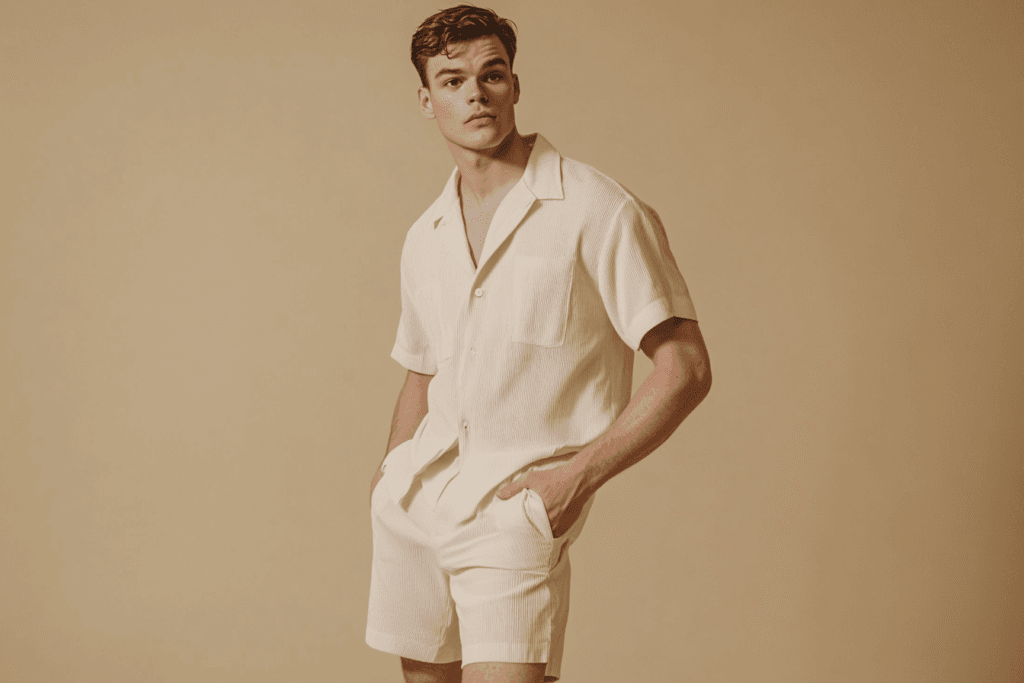
Conclusion
Prioritize breathable fabrics for their durability, comfort, and versatility across various settings.
FAQ
What makes a fabric breathable?
Breathable fabric allows air circulation and moisture evaporation. Its fiber composition, weave, and moisture-wicking properties ensure comfort and temperature regulation.
How can you identify breathable fabric?
Check the label for terms like “moisture-wicking” or “air-permeable.” Natural fibers like cotton and linen or synthetic blends often indicate breathability.
Can breathable fabrics be used in cold weather?
Yes, fabrics like merino wool regulate temperature and wick moisture, keeping you warm and dry in cold climates.
Related:
1.Adaptive fabric with emissivity regulation for thermal management of humans →
2.What’s the most breathable fabric →
3.The effect of textiles on clothing physiological comfort while backpacking in the cold →
4.What is Breathable Material? A Guide to Comfortable and Functional Clothing →
5.Breathable Waterproof Fabrics Market →
